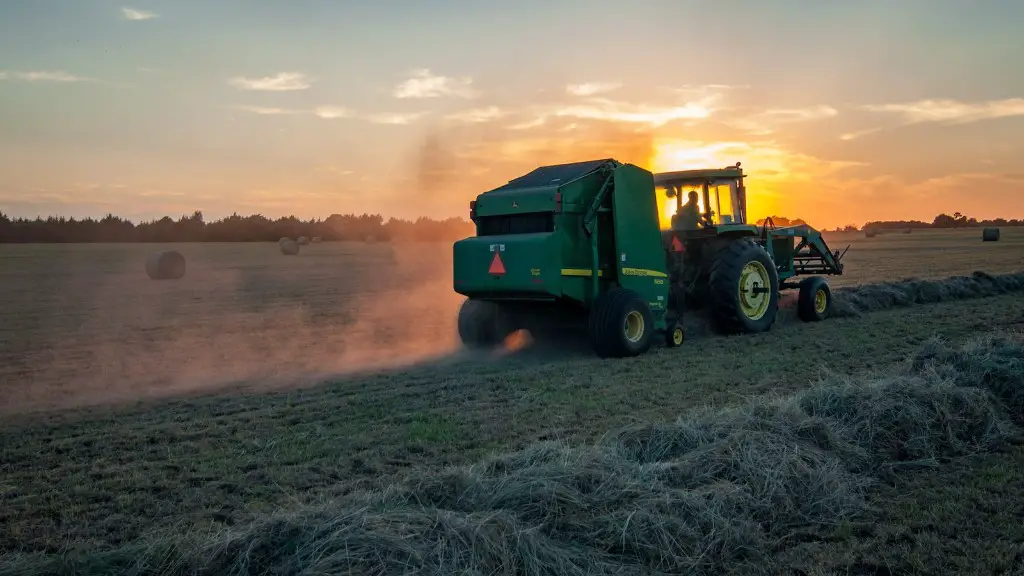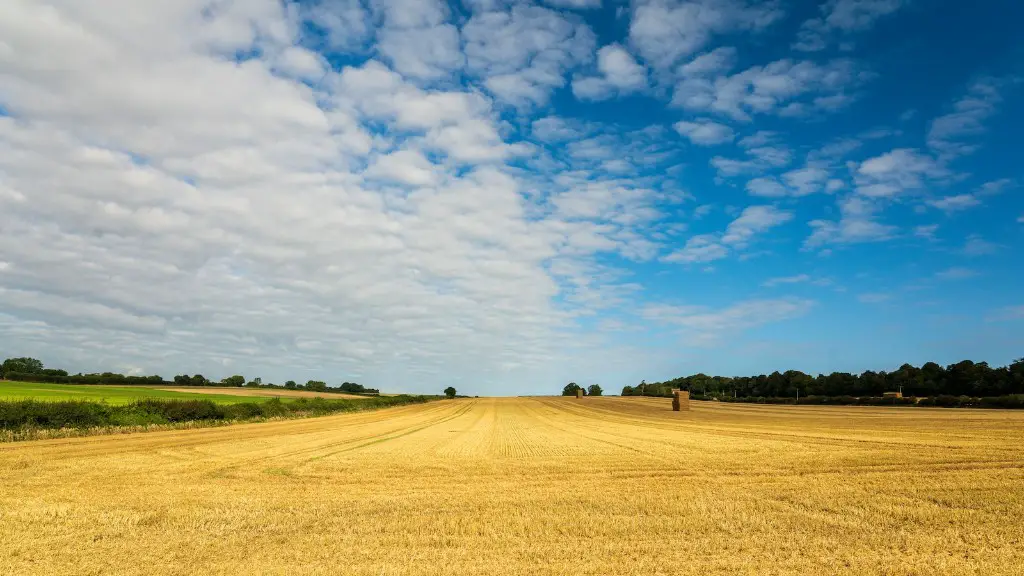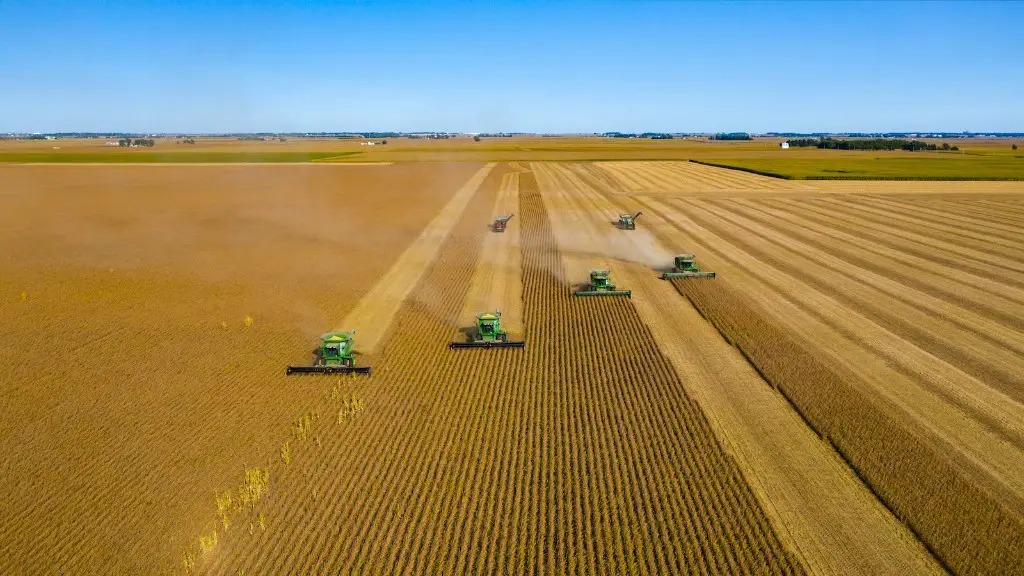Where did agriculture start? Agriculture is an ancient human practice of cultivating fields, growing crops, and raising animals. It has been fundamental to the development of complex societies, and allows humans to domestically produce much of the food they need to survive. Agriculture originated independently in several places around the world, most likely in the Middle East, and it remains an essential part of many cultures today.
Middle East
The earliest known evidence of agriculture can be found in the Middle East, in an area known as the Fertile Crescent. This is an area of land stretching across Israel, Palestine, Jordan, Syria, and Iraq, where the landscape is especially conducive to farming. Remains of plants, such as lentil, wheat, and barley, reveal that the land has been used for cultivation since 12000 BC. The Fertile Crescent is regarded as the ‘cradle of civilization’ due to the domestication of animals and development of cities such as Jericho. Wild cereals had to be harvested to be domesticated, and this provoked the start of agriculture and the study of crop agriculture. In addition, it has been suggested that the domestication of animals and the development of agriculture were related processes.
China
In China, evidence from the Yangshao Cultures of the Yellow River shows agricultural production dating back to 6000 BC. This culture was highly sophisticated, cultivating legumes, millet, sorghum, and wheat, as well as raising pigs, chickens, and turtles. This system is sometimes regarded as the world’s earliest industrialized agricultural system, as it relied heavily on irrigation and animal labor. It is likely that agriculture began in China due to the abundance of natural resources and the rise of agricultural villages around the riverbanks.
India
In India, agriculture was used as far back as 5500 BC, when the Indus Valley Civilisation established agricultural settlements there. In the 4th millennium BC, early rice cultivation techniques were developed, and by 3000BC, the domestication of a number of animals had occurred. This civilisation was innovative in its use of irrigation, drainage, and terracing to promote efficient crop growth. The Indus Valley Civilisation also developed tools to support the crop production, such as hoes and plows, and traded goods from their cities with neighbouring regions.
Africa
In Africa, evidence shows that crop rotation began as far back as 2500BC in Egypt. Ancient Egyptians used the Nile River to irrigate their crop fields, and built extensive systems for water storage and distribution. The Nile provided a reliable source of water for irrigation, allowing Egyptian farmers to cultivate the same fields year after year. This form of agriculture eventually spread throughout Africa, and today the continent is home to diverse cultures and agricultural practices.
Americas
Agriculture in the Americas began in the challenging environment of the Amazon rainforest, where natives developed farming techniques as early as 8,000 BC. These early farmers employed slash-and-burn cultivation, in which a patch of forest was burned to make room for crops, such as maize, beans, and squash. In many areas of the Americas, these farmers engaging in crop rotation and intercropping, which is the practice of growing two or more different types of crops simultaneously in the same field.
Australia and Oceania
In Australia and Oceania, agriculture was practiced by Aboriginal peoples since at least 40,000 years ago. These early farmers developed techniques for navigating the hostile desert environment, and for using the limited resources available. Early agriculturists grew an array of crops, such as yams and taro, and managed water resources to support the growth of those crops. They also developed methods for catching and herding animals, such as kangaroo and emus, for human consumption.
Polynesia
In regards to the Polynesian islands, agriculture is believed to have been introduced by the first settlers around a thousand years ago. One of the earliest known agricultural societies was that of the Marquesas, who developed sophisticated systems of crop rotation and irrigation. They grew traditional Polynesian crops, such as coconuts, breadfruit, bananas, and yams, and kept cattle and chickens. In addition, the Marquesas traded agricultural goods with neighboring islanders, and their agricultural practices had a profound impact on the development of Polynesian culture.
South East Asia and Pacific Islands
In South East Asia, it is believed that agriculture began about 10,000 years ago, when the first waves of settlers arrived from Africa and the Middle East. These settlers brought new crops, such as rice and taro, and new farming techniques, such as terracing, which they used to cultivate steep hillsides. They also developed systems of water management and animal husbandry, which allowed them to maximize their crop yields. Today, many of these same cultivars and practices remain integral parts of South East Asian and Pacific Island culture.
Conclusion
Agriculture is an ancient practice which has been integral to human survival and development. It first arose independently in several places around the world, most likely in the Middle East, before spreading throughout Africa, Asia, the Americas, and Oceania. Today, these diverse agricultural practices remain an essential part of many different cultures, and form the foundation of many modern-day societies.


